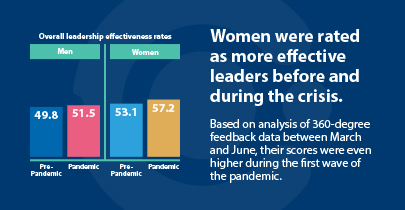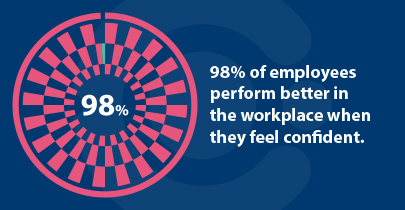Gender imbalance in the workplace is clear to see. A recent report on the topic from the CSO shows only 13% of Chief Executive Officers (CEOs) in large enterprises in Ireland are women. This imbalance isn’t going away. Recent figures show that at the current rate of change, it will take at least another 257 years to achieve economic gender equality. People are leaving the workforce in droves. The Covid pandemic has had an enormous impact on everyone in the workplace, particularly women.
It’s easier to retain than recruit. Addressing gender inequality in the workplace is a great way for men to start building better relations with women. And with the current turmoil in the labour market, creating an inclusive workplace for everyone is also a strong business bet. There is no better time than now to discuss how to get creative with your diversity and inclusion strategy.
Men & women are different

Many of the conversations about gender equality shy away from one simple truth; statically, men and women excel in different areas. For example, research from the Harvard Business School shows women as more effective leaders, before and during the pandemic. But like any attribute, becoming a good leader is a learned skill.
By highlighting some of the statically innate skills men and women excel at, we can look at three ways men and women can build better relations.
Are women better at supporting colleagues?
The last 18 months have seen many workplaces moving to a hybrid model. Employee isolation and burnout have companies putting wellbeing and diversity, equality & inclusion practices to the front of the agenda.
For many people, the shift from office to full-time working from home model was tumultuous, both personally and professionally. Research by RSPH found 67% of respondents have felt less connected to their colleagues since the switch to a working from home model. This highlights the importance of having a supportive and connected team.
According to McKinsey’s Women in the Workplace report, women leaders are more supportive of the individuals on their teams and ensure good workplace wellness is practiced. For example, ensuring that workloads are manageable, and checking in on team members' general well-being. Women in leadership positions were also found to prioritize DEI activities outside of their main job obligations and are more likely to be allies of females and minorities in the workplace.
Two studies, with twins, (a male set and a female set) showed that only one-third of leadership qualities are associated with heredity. Simply put, Leadership qualities are learned qualities and not simply innate abilities people are born with.
Forbes lists five qualities all good leaders have. ‘Authentically caring about people’ is one of these five.
Being a more supportive leader is a learned skill, Human Resource managers (HR) can take a controlling role in ensuring training support for wellness practices are rolled out. Ongoing training should be provided for all employees. With the goal of ensuring no one in an organisation is feeling isolated or unsupported.
How does the confidence gap affect recognition?
Having confidence is such an important skill to have in your arsenal. A study by Indeed.com found a whopping 98% of respondents said they perform better when they feel confident.
The ongoing Great Resignation has seen a significant number of people deciding to leave their current jobs. 96% of Indeed respondents states, they are more likely to stay at a company when they feel confident. The Confidence Gap, a term coined by Dr. Russ Harris, explains some of the reasons why males generally outperform women in the workplace, despite women having the same level of experience and academic achievements.
In short, the theory holds that in a corporate world build my men, bragging about your achievements gets you noticed, which more likely leads to recognition and promotion. Also, men are more likely than women to engage in self-promotion, as men are more confident in their abilities.
A Hewlett Packard report from 2014 is widely used to demonstrate the confidence gap. ‘Men apply for a job or promotion when they meet only 60% of the qualifications, but women apply only if they meet 100% of them’.
This example is also used in a common myth about men’s ability to negotiate salaries. A 2021 study by USC found that males and females are equally efficient at salary negotiation. Inequality occurs when it comes to the outcome of negotiations. The USC research showed that, if women perform worse in a real-life setting while negotiating salaries, it’s due to biases among hiring teams.
Confidence is a learned skill and a recent article in the Atlantic debunks the Confidence Gap, as a case of mistaking the symptom for the cause. Women are just as confident as men but fear the backlash of not complying with gender norms. This squarely places the issue at the feet of gender bias.
Regardless, no two people are the same, there are reserved men and confident women. To help build better relations between men and women in the workplace, training can be implemented to ensure everyone is confident in their abilities. And that their confidence is seen as a positive attribute.

When it comes to companies committing to providing confidence training for their staff it’s a no-brainer. HR leaders need to create an internal development structure that includes business and leadership training to help employees discover skills and methods to grow in confidence.
This growth of confidence will allow individuals to feel more comfortable taking risks that will help them perform better for the business and as individuals. When it comes to companies committing to providing confidence training for their staff it’s a necessity. HR leaders need to create an internal development structure that includes business and leadership training to help employees discover skills and methods to grow in confidence. This growth of confidence will allow individuals to feel more comfortable taking risks that will help them perform better for the business and as individuals.
Who are the best workplace collaborators?
Collaboration is the act of working together, especially on a goal or shared project, and working in teams is the best way to accomplish our shared goals. Research has found that women are better communicators in the workplace when compared to men. Communication is key to collaboration. And women’s communication skills have been brought to the forefront. With remote working surveys finding that only 17% of women found remote working communications a struggle in comparison to 25% of men. Moreover, according to Indeed, teamwork is one of the top 3 workplace skills to have right now.
However, Susan Cain the author of ‘Quiet’, frames collaboration and the current trend of favouring teamwork over all other methods as a bias. Not between men and women but, towards extroverts at the expense of introverts. This view skews assumptions about women being better communicators and asks adds more complexity to an issue normally viewed in terms of gender.
Collaboration is a learned skill, and everyone needs to be provided with adequate training to ensure all members of their teams have equal opportunities and time to voice opinions. Stronger links and relationships among team members contribute to a positive workplace culture and boost employee morale. According to APQC’s Virtual Collaboration: Rules of the Road survey, gender is not a deciding factor in your efficiency in collaborating. It’s knowing when, where, and how to contribute, as well as when it's ok to take a step back.
Conclusion
Building better relations between men and women is especially important in the workplace, where women are at a clear disadvantage due to inherent sexism, unconscious bias, and expected gender norms. We can point to, supporting colleagues, the confidence gap, and collaboration as differences between the genders. Treating each other with mutual respect is the best way to build better relations with all your colleagues.
If you’d like to learn more about Cpl's D&I initiatives or are looking for guidance when applying your D&I strategy, get in touch.
Sources:
Achieving Peace, Equality and a Healthy Environment, Dr. Jerome Teelucksingh, 2011.
Gender Balance in Business Survey, CSO.ie, July 2021.
Impact of the Great Resignation, Cpl, October 2021.
The Impact of Covid-19 on Women in Business, Cpl, November 2021.
Women Are Better Leaders During a Crisis, Harvard Business Review, December 2020.
Women in the Workplace 2021, McKinsey, September 2021.
The mental and physical health impacts of home working during Covid-19, RSPH, February 2021,
The 5 Qualities All Successful Leaders Have in Common, Northeastern University, 2019.
Five Characteristics Of Highly Impactful Leader, Forbes, December 2020.
The Confidence Gap In Men And Women: How To Overcome It, Zenger Folkman, January 2021.
Why women are especially skilled at leading during a crisis, Fast Company, April 2021.
Strategies for improving the employee experience and successfully adapting to work now, EBN, April 2021.
Top 11 Skills Employers Look for in Candidates, Indeed.com, December 2020.
Quiet Revolution, Susan Cain.
Virtual Collaboration: Rules of the Road, APQC, October 2020.
